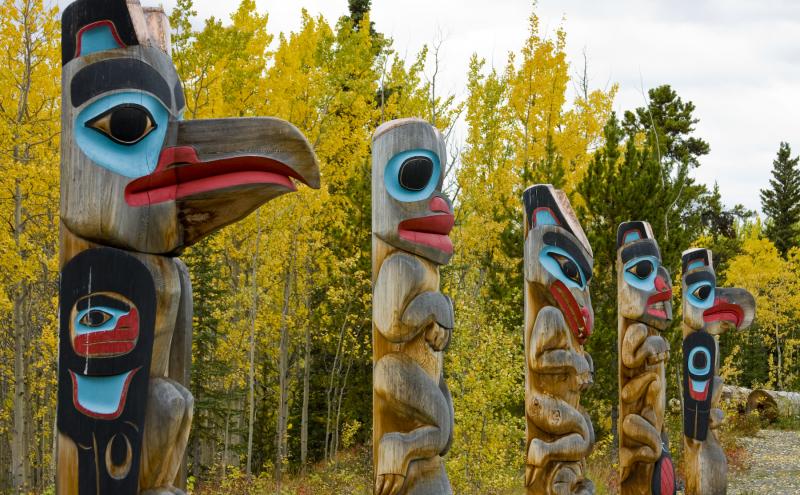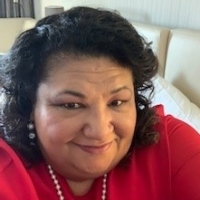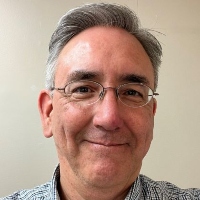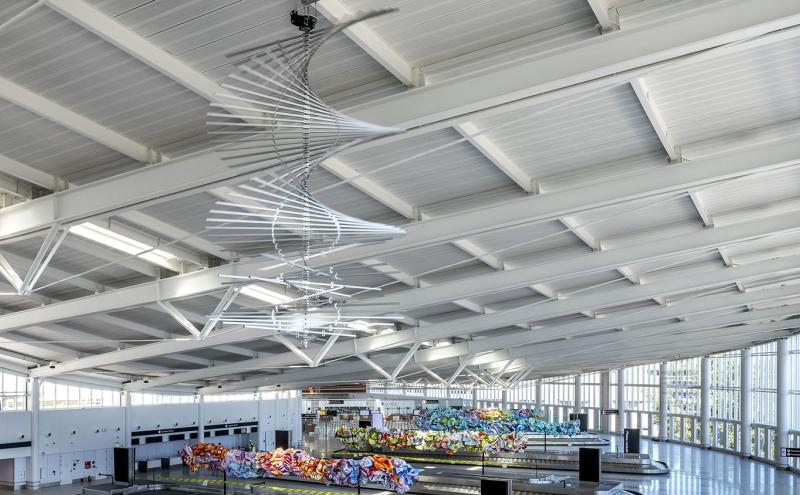
Originally published in 2022, updated for 2023
By Marie Bell-Allen and Sean Anderson, Members of the Native American Committee at the Port of Seattle
| Marie Bell-Allen works on the maintenance and assets management team at Seattle-Tacoma International Airport (SEA). |  |
| Sean Anderson works in the SEA Airport Capital Projects program management group. |  |
We knew and worked with each other for nearly 20 years before we learned that we’re both members of the Tlingit tribe from Alaska. It was a mind-bending realization, and a good reminder that Indigenous people are everywhere. Some might look at us and see a Black Woman and a White man but that is only a piece of who we are. When we finally made the realization that we were both Tlingit, we laughed at first, and then our relationship took on new shape and meaning. Sean grew up in Juneau, Alaska, and is inland Tlingit from the Yukon territory, Canada. Marie is also Tlingit, but from Klawock Alaska, and she grew up in Seattle.
What is Tlingit?
The Tlingit (KLINK-it) people are generally coastal from Southeast Alaska except for a group who moved into the southern Yukon and northern British Columbia (B.C.), Canada in the early 18th century. In the United States, Tlingit people are referred to as Alaska Native. In Canada, they are referred to as First Nations.
Tlingit culture is rich and substantive, with strong oral traditions. Our art forms are complex and beautiful. The abundance of fish and game allowed our culture to thrive for thousands and thousands of years. This culture is alive and well with a sizable population. Tlingit people continue to live in peace with our coastal neighbors the Haida and Tsimshian peoples. Today, the Central Council of the Tlingit and Haida Indian Tribes of Alaska serves as the tribal government for our people.
Being Alaska Native is a central part of our identity, family, and life. Not only to do we both feel a special sort of honor to be Alaska Native, but our ancestry grounds us. Our heritage reminds us of what is important and what we value –— our family, community, traditions, and the land.
We have both experienced discrimination and racism throughout our lives and in different ways. We’ve seen our community struggle with depression, alcoholism, and poverty. These hardships are the symptoms of colonialism and racism. They are the generational impact of genocide—, and despite all of this, Indigenous people, have survived.
We are still stewards of the land, we are still here, and we have never left
We have both experienced and seen the impacts of how Native communities have grown invisible to non-Native people. For instance, popular culture in the US tends to talk about Indigenous and Native people like we’re something of the past. “Let us honor the original stewards of this land.” While these sentiments are likely well-intentioned, they miss a critical point. We are still stewards of the land, we are still here, and we have never left. Our people and culture continue to have much wisdom to offer. As Indigenous people continue to live our story, society will need to make Indigenous life and history more visible in our country.
Change is necessary
Before Indigenous Peoples’ Day was recognized, a group of Indigenous organizers in Seattle led marches and protests in downtown Seattle on Columbus Day from 2009-2014. In 2014, Indigenous activists and allies successfully advocated for the City of Seattle to recognize the second Monday of October as Indigenous Peoples’ Day. Today, Seattle is one of more than 100 cities around the country that have replaced Columbus Day with Indigenous Peoples’ Day.
This change is necessary and important. Columbus, and the wave of colonialism that followed him, devastated and ended the lives of millions of Indigenous people and erased whole civilizations. Celebrating Columbus Day celebrates this outcome. Rather than allowing Columbus to make Indigenous people disappear, we should reflect on and appreciate what life was like on this land before Europeans. Let the Indigenous tell the Indigenous story. The story of life before borders, countries, capitalism, hunger, and pollution. We all learn from honoring the ways that Indigenous people have sustained life and this land for generations.
How can you help?
This Indigenous People’s Day, let us all reflect on who the original people are today, not just who we were. Ask yourself the question, especially if you’re non-Native, “what does it mean to be Indigenous today?” And “as a non-Native person, how can I support Indigenous communities?”
As we encourage healing in Indigenous communities, there are steps we can all help in this process. We recommend that you start with three things — vote, volunteer, and donate (donations do not have to be monetary; you could donate supplies, your time, or a gesture of paying it forward).
If you need help getting started, we encourage you to check out the information below. There are many more Native organizations and tribes doing incredible work in this area, so this is by no means an exhaustive list.
As we reflect on Indigenous Peoples’ Day, help us make Indigenous communities visible every day, not just one day a year. Help us recognize that Indigenous people are diverse, resilient, strong, and constantly changing. We are two Alaskan Natives who are sharing a bit of our story and our perspective. We do not speak for all Indigenous and Native communities. Walk with us as we define what an inclusive community, Natives and non-Natives alike, looks like today.
WE walk, WE define, then WE celebrate Indigenous Day.
To Volunteer, Donate, and Learn:
- United Indians of All Tribes
- Na’ah Illahee Fund
- Chief Seattle Club
- Seattle Indian Health Board
- Nakani Native Program
- Seattle Urban Native Nonprofits
To Support Native-Owned Business:
- Sacred Circle Gifts and Art (one store located at SEA Airport)
- Eighth Generation
- Native Works
- Indian Summer
- Off the Rez Cafe and Food Truck
To Celebrate Indigenous Peoples’ Day:
Duwamish Longhouse and Cultural Center — Traditional Duwamish cedar longhouse, museum, and art gallery located adjacent to a visitable archaeological and cultural historic site. On November 24-26, 2023, the Longhouse will host a Native Arts and Crafts market.
Photo caption for top photo: Clan poles outside the Teslin Tlingit Heritage Centre, Yukon, Canada.
Photo credit: "Tlingit clan poles 9136" by Yukon White Light is licensed under CC BY-NC-ND 2.0.




